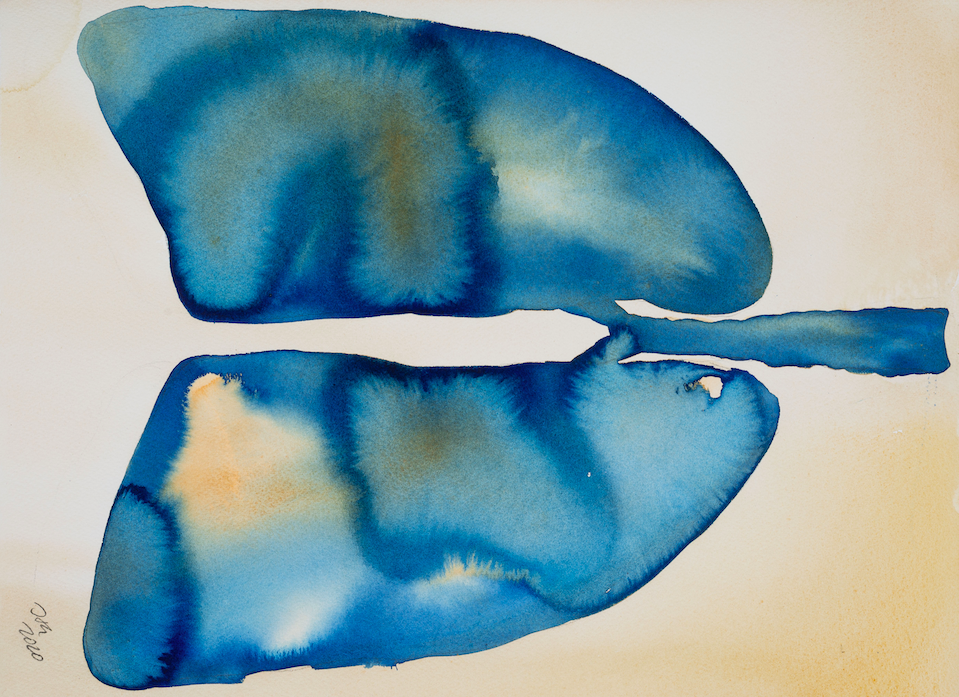Lung cells

Biorelevant culture of lung cells on Biolaminin substrates
Laminin expression in lung
Laminin is key proteins in the basement membranes of the airway and alveolar epithelium, endothelium, bronchial and vascular smooth muscle cells, nerve cells, and visceral pleura. Laminins are crucial for lung development where different laminin isoforms exhibit specific, non-overlapping functions. All five laminin α chains are present during early embryonic lung development but normal adult lung tissue contains primarily laminin α3, α4, and α5 chains (Miner et al,1997). Laminins α1, α2, and α3 are co-localized to the airway epithelial basement membrane during early lung development. Laminin α4 is seen in the pericellular basement membrane of smooth muscle cells lining the airway epithelium (Nguyet and Senior, 2006). Laminin α4 and α5 are also expressed in vascular endothelial basement membrane in late embryonic lungs. Laminin α5 also co-localizes with laminins α1–α3 in the BM of airway epithelium and it is the only laminin α chain found in the visceral pleural basement membrane (Nguyet and Senior, 2006).
Laminin 111 and 521 play a role in early and late lung development
It has become evident that laminin α1 and laminin α5 have central roles in the development of the human lung. Laminin α1 expression is restricted to early human lung morphogenesis, whereas the expression of laminin α5 in the human lung is continuous from early lung development through adult life (Pierce et al., 2000). Laminin 111, expressed by epithelial and mesenchymal cells in the mouse developing lung, plays a role in branching morphogenesis and in epithelial cell polarity (Schuger et al., 1990a; Schuger et al., 1990b; Schuger et al., 1991; Schuger et al., 1997) whereas laminin isoforms 211 and 221 have a role in smooth muscle cell differentiation. In developing human lung, Virtanen et al. found that the most significant changes in laminin and integrin expression pattern were found during the development from the pseudo glandular stage to the canalicular stage (Virtanen et al., 1996). Expression of laminin α5 begins in early lung development and persists into adulthood with a widespread expression. In the lung, laminin α5 is present in the airway, alveolar, endothelial, and visceral pleura BMs. Studies of laminin α5-deficient mice indicate that laminins 511 and 521 are essential for normal lobar septation in early lung development and normal alveolarization and distal epithelial cell differentiation and maturation in late lung development (Nguyet et al, 2005). Laminin 332 is well associated with cutaneous epithelial cell functions, however, laminin γ2 null mice have only minimal changes in lung development, and it’s suggested that laminin 332 in the lung have a role in response to injury or disease processes. Laminin α2 and α4 null mice survive to adulthood and have no obvious lung abnormalities (Nguyen and Senior, 2006).
Laminin-integrin interactions regulate lung branching morphogenesis
Lung branching morphogenesis likely involves integrin interactions with laminins. The integrin α6 null mouse does not have a reported lung phenotype, however integrin α3/integrin α6 double knockout mice have several features reminiscent of the laminin α5 knockout (De Arcangelis et al., 1999). However, branching morphogenesis is not affected in laminin α5, γ2, or α3 knockouts even though integrins α3 and α6 are the primary adhesive receptors for α3 and α5 laminins. Since laminin 111 has been shown to play a role in branching morphogenesis, it has been suggested that laminin 111 could be central for this integrin interaction (Nguyet and Senior, 2006).
We recommend Biolaminin 111 for early lung specification and Biolaminin 521 for maturation.
Succeed with your application
-
Instructions 001: Coating with Biolaminin substrates
Protocol and concentration calculations for coating cultureware with Biolaminin
Open pdf -
Application note 016: Biosilk 3D biomaterial for organoid culture
Features and supporting data for Biosilk in 3D cell culture
Open pdf -
Instructions 011: Biosilk 3D scaffolds for differentiation and proliferation of hPSCs
Protocol for human pluripotent stem cell expansion, differentiation and organoid formation in 3D
Open pdf
Biolaminin Key Advantages
Laminins are key proteins in the basement membranes of the airway and alveolar epithelium, endothelium, bronchial and vascular smooth muscle cells, nerve cells, and visceral pleura. Laminin α1 and laminin α5 have central roles in the development of the human lung.
Specific laminin isoforms are present in different tissue microenvironments and are essential for cell survival, proliferation, and differentiation. Biolaminin products allow you to imitate the natural cell-matrix interactions in vitro.
All our matrices are chemically defined and animal origin-free, which makes them ideal substrates for each level of the scientific process – from basic research to clinical applications.
Our products have consistent composition and quality. This enables minimized variability between experiments and uniform pluripotency gene expression profiles between different cell lines.
Numerous scientists have found our products and finally succeeded in their specific stem cell application. The power of full-length laminins incorporated into various cell systems is well documented in scientific articles and clinical trials.
Recommended products
-

Biolaminin 521 LN (LN521)
Human recombinant laminin 521
Biolaminin 521 LN is the natural laminin for pluripotent stem cells and therefore reliably facilitates self-renewal of human ES and iPS cells in a chemically defined, feeder-free and animal origin-free stem cell culture system. LN521 is animal origin-free to the primary level.View product -

Biolaminin 111 LN (LN111)
Human recombinant laminin 111
Biolaminin 111 is commonly used as a general attachment protein for many cell types in vitro.View product -

Biolaminin 121 LN (LN121)
Human recombinant laminin 121
Biolaminin 121 can be used as a general attachment protein for most cell types in vitro – in particular for hepatic and neural differentiation and to enhance neurite outgrowth.View product -

Biosilk 521
3D culture substrate
Biosilk 521 is a natural biomaterial made of spider silk and laminin 521 – a biocompatible 3D culture mesh for expansion and long-term differentiation of human pluripotent stem cells and for organoid formation of various cell types.View product

Talk to our team for customized support
We are here to help you in your journey.